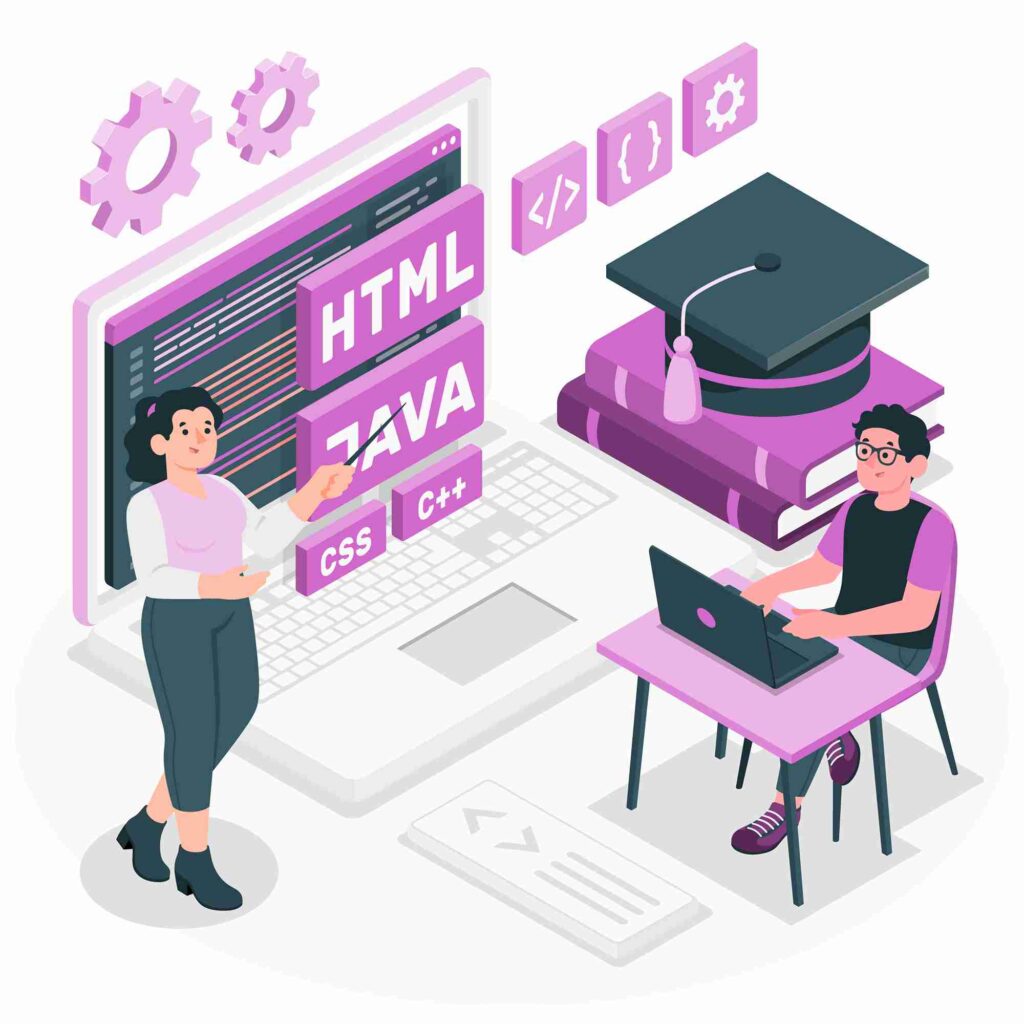E-Learning Web Portal Development
IT Chimes possess exceptional developing team to make a perfect blend of business experience and e-learning domain to deliver the best e-learning portal to our clients. For over 10+ years, web portal development has been building up tough competencies to become the right partner for your web portal project. We offer our clients with complete e-learning portal which is tailored to all your requirements. We help you to enhance your user experience and provide secure access to information and data.
Service
Learning Management System Software
LMS can help in easy training for educational organization, institution and allow access students/ employees anytime and anywhere. This can also used to distribute course and for educational records. We are expert at integrating LMS with custom courses to get desirable results. We provide you with plug-in for documenting, delivering, reporting and tracking learning process.
End To End Learning Solutions
We offer you with end to end services starting from analysing your organization structure, skill gaps, learning areas and many other aspects. We apply appropriate pedagogy to offer you with the most suitable solution.
E- Learning Application Development
We develop the E- Learning application that suits your business approach in the best way possible. This custom application is as per market trends and requirements.
Education Portal Development
We aim at providing best education portal development which enables interactive system for e-Learning. Our approach gets customized as per the requirements of our clients for various services.
Benefits
Employee Learning
We help you to provide your employees with the learning platforms anywhere from mobile or cloud devices.
Compliance
We help you deploying compliance training at a faster rate, provide you with the reporting and automate re-certifications.

Multi-Channel
We offer our clients with learning management system (LMS) for all learning initiatives.
Robust Reporting
IT Chimes offer you with robust, innovative and intuitive reporting for rescuing our client’s company from labeling as outdated learning medium.
Frequently Asked Questions
Key features often include:
- Course Management: Tools for creating, organizing, and managing courses.
- User Accounts: Profiles for students and instructors with role-specific access.
- Content Delivery: Support for various content types like videos, PDFs, and quizzes.
- Assessments and Testing: Tools for creating and administering quizzes and exams.
- Interactive Elements: Discussion forums, chat, and collaborative tools.
- Tracking and Analytics: Monitoring progress, grades, and engagement.
- Responsive Design: Accessibility across different devices and screen sizes.
Common technologies include:
- Frontend: HTML, CSS, JavaScript, and frameworks like React or Angular.
- Backend: Languages like PHP, Python, Ruby, or Node.js; frameworks like Django or Express.js.
- Databases: SQL-based systems like MySQL or PostgreSQL, or NoSQL options like MongoDB.
- Learning Management Systems (LMS): Platforms like Moodle or Blackboard, which can be integrated or used as a base.
- Hosting: Cloud services like AWS, Azure, or Google Cloud.
Security measures include:
- Authentication and Authorization: Secure login systems and role-based access controls.
- Data Encryption: SSL/TLS for data in transit and encryption for sensitive data at rest.
- Regular Updates: Keeping software and libraries up to date to mitigate vulnerabilities.
- Backup and Recovery: Regular backups and disaster recovery planning.
- Compliance: Adhering to data protection regulations like GDPR or CCPA.
Customization options include:
- Course Structure: Tailoring course layouts and modules to fit specific educational requirements.
- User Interfaces: Designing interfaces that align with institutional branding or specific user needs.
- Integration: Connecting with other tools and systems, such as payment gateways, third-party content, or existing databases.
- Functionality: Adding specialized features like gamification, adaptive learning paths, or multi-language support.
Common challenges include:
- Scalability: Ensuring the platform can handle increasing numbers of users and content.
- User Experience: Designing an intuitive and engaging interface for diverse user groups.
- Content Management: Efficiently managing and updating educational content.
- Technical Support: Providing ongoing support and maintenance to address issues and update features.
- Integration: Seamlessly integrating with other educational tools and platforms.
Effectiveness can be measured by:
- User Engagement: Tracking user activity, course completion rates, and participation in interactive elements.
- Feedback: Collecting user feedback through surveys, reviews, and direct communication.
- Performance Metrics: Analyzing data related to system performance, such as load times and error rates.
- Learning Outcomes: Assessing the impact on learning achievements and improvements in knowledge retention.
The cost varies widely based on factors such as:
- Scope and Complexity: Features, customization, and scale.
- Development Team: Rates of developers, designers, and project managers.
- Technology Stack: Costs of licenses, third-party services, and infrastructure.
- Timeline: Project duration and any additional costs for ongoing maintenance and updates.
Scalability can be achieved by:
- Cloud Services: Using cloud infrastructure to handle increasing loads.
- Load Balancing: Distributing traffic across multiple servers to maintain performance.
- Modular Architecture: Designing the portal with modular components that can be scaled independently.
- Database Optimization: Ensuring databases are optimized and can handle large volumes of data efficiently.
Best practices include:
- User-Centric Design: Focus on usability and accessibility for all users.
- Responsive Design: Ensure compatibility across various devices and screen sizes.
- Clear Navigation: Provide intuitive navigation and organization of content.
- Engaging Content: Use multimedia and interactive elements to enhance learning experiences.
- Regular Testing: Conduct thorough testing to identify and fix bugs and usability issues.
